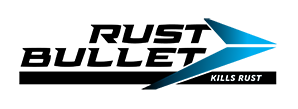![]() Click here for Certificate – National Testing Standards, Inc.
Click here for Certificate – National Testing Standards, Inc.
The Scope
Method:
The first mechanical test performed was the Taber Abrasion Test, ASTM D4060. This test was conducted in accordance with the procedures set forth in ASTM D4060. A Taber Abraser machine, which requires a specific size panel, cycles that panel on a horizontal plain against an abrasive wheel at a given angle and pressure. Although it is hard to correlate a given number of cycles to performance in the field since field conditions are difficult or impossible to predict, it is an excellent measure of the abrasion resistance of one coating to another. Because so many of the coatings failed the accelerated weather testing, we selected only the best performers for the series of mechanical tests. The four coatings selected for the first mechanical test (the Taber Abrasion) were: Wasser® Brand System, Rust-oleum® Cold Galvanizing Compound, POR-15® System, and Rust Bullet®. All coatings were applied on clean (not rusted) cold rolled mild steel panels according to manufacturer’s instructions. The cycles are continued until the abrasive wheel wears through to the metal underneath the coating. The greater the number of cycles required to reach the metal, the more abrasion resistant the coating is.Results:
The first mechanical test performed was the Taber Abrasion Test, ASTM D4060. This test was conducted in accordance with the procedures set forth in ASTM D4060. A Taber Abraser machine, which requires a specific size panel, cycles that panel on a horizontal plain against an abrasive wheel at a given angle and pressure. Although it is hard to correlate a given number of cycles to performance in the field since field conditions are difficult or impossible to predict, it is an excellent measure of the abrasion resistance of one coating to another. Because so many of the coatings failed the accelerated weather testing, we selected only the best performers for the series of mechanical tests. The four coatings selected for the first mechanical test (the Taber Abrasion) were: Wasser® Brand System, Rust-oleum® Cold Galvanizing Compound, POR-15® System, and Rust Bullet®. All coatings were applied on clean (not rusted) cold rolled mild steel panels according to manufacturer’s instructions. The cycles are continued until the abrasive wheel wears through to the metal underneath the coating. The greater the number of cycles required to reach the metal, the more abrasion resistant the coating is.Results:
| Rust Bullet® | 14,000 cycles |
| Rust-oleum® Cold Galvanizing Compound | 30 cycles (FAILED) |
| Wasser® Brand System | 4,000 cycles |
| POR-15® System | 10,000 cycles |
Rust-oleum® Cold Galvanizing Compound, panel number 5, was considered a failure and was eliminated from further testing.
Method:
Original specimens of panels 2, 5, 6, and 8 were evaluated for abrasion resistance in accordance with the procedures set forth in ASTM D-4060 Taber using 1000 gram load and CS-10 abrasive wheels.
Results:
| Specimen | Cycles to Wear-Through |
| 2 | 14,000 cycles |
| 5 | 30 cycles |
| 6 | 4,000 cycles |
| 8 | 10,000 cycles |
Note: Panel #5 was considered a failure and was eliminated from further testing.
